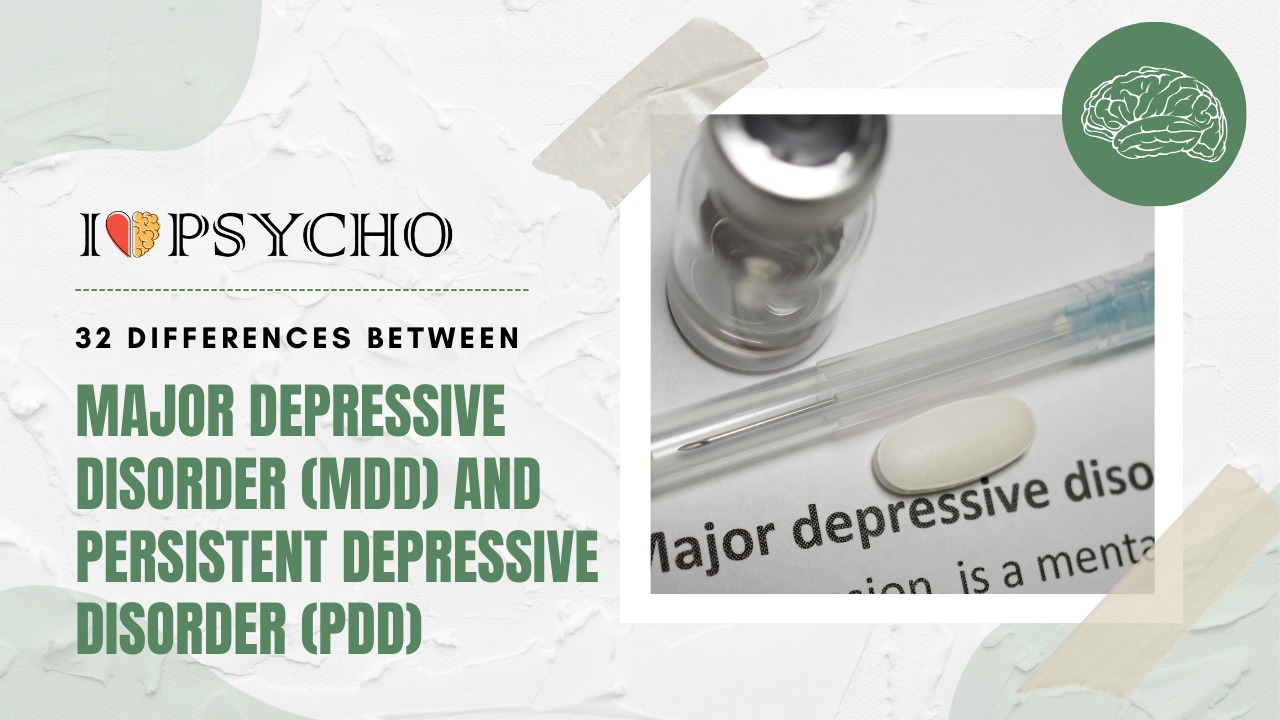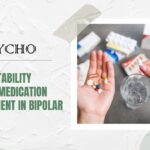Major Depressive Disorder (MDD) and chronic Depressive Disorder (PDD) are two mental health diseases that cause chronic sorrow and poor mood. They have similar symptoms but differ in length, intensity, and symptom patterns.
Clinical depression, or MDD, comprises strong and pervasive depressed symptoms for at least two weeks. These symptoms might include intense melancholy, lack of interest or pleasure in activities, hunger and sleep abnormalities, weariness, difficulties focusing, feelings of worthlessness, and even thoughts of death or suicide. MDD commonly occurs in bouts with remissions and impairs everyday functioning. A person may have one episode or recurring episodes.
However, PDD, formerly dysthymia, is characterized by persistent poor mood lasting at least two years in adults and one year in children and adolescents. PDD symptoms are milder than MDD symptoms, but they persist and can affect social, vocational, and personal functioning. PDD patients’ moods fluctuate, but their depression is stable. PDD symptoms may not be as severe as MDD symptoms, but their persistence can be devastating.
Key distinctions include symptom duration and persistence. MDD has acute symptoms that may last a short time, while PDD has less severe but continuous symptoms. MDD is more disruptive during acute episodes, but PDD can have a persistent influence on a person’s life. Earlier-onset PDD can shift into MDD, demonstrating a continuum between the two illnesses.
MDD and PDD are treated with psychotherapy, medication, or both. PDD is chronic, thus long-term management and support are essential. Because these illnesses vary, healthcare providers must appropriately identify them to determine therapy. Understanding MDD and PDD distinctions is crucial for diagnosing, treating, and caring for people with these depressive illnesses.
Also Read: 45 Difference Between Anxiety Disorders and Mood Disorders
Here are the 32 differences between Major Depressive Disorder (MDD) and Persistent Depressive Disorder (PDD):
|
S.No. |
Aspect |
Major Depressive Disorder (MDD) |
Persistent Depressive Disorder (PDD) |
|
1 |
Duration |
Must last at least 2 weeks |
Persists for at least 2 years |
|
2 |
Chronicity |
Typically episodic |
Chronic and continuous |
|
3 |
Severity |
Can be severe or mild |
Typically less severe |
|
4 |
Symptoms |
Intense and pervasive |
Less intense, but persistent |
|
5 |
Onset |
Can occur suddenly |
Gradual onset |
|
6 |
Number of episodes |
Often recurrent |
Continuous low-grade symptoms |
|
7 |
Sleep disturbances |
Common symptom |
Less common symptom |
|
8 |
Appetite changes |
Common symptom |
Less common symptom |
|
9 |
Energy levels |
Often significantly reduced |
Less severe energy loss |
|
10 |
Psychomotor agitation |
More common |
Less common |
|
11 |
Psychomotor retardation |
More common |
More common |
|
12 |
Suicidal thoughts |
Common symptom |
Common symptom, but less intense |
|
13 |
Seasonal variation |
Can be affected by seasons |
Less influenced by seasons |
|
14 |
Age of onset |
Can occur at any age |
Typically begins in adolescence or adulthood |
|
15 |
Family history |
May or may not have a family history of MDD |
Often associated with a family history of depression |
|
16 |
Co-occurring disorders |
Often comorbid with anxiety, substance abuse, etc. |
May have comorbid anxiety but less likely to have other comorbidities |
|
17 |
Response to treatment |
Often responds well to medication and therapy |
Can be more challenging to treat, with longer treatment duration |
|
18 |
Course of illness |
May have single episodes or recurrent episodes |
Persists over a long period with varying intensity |
|
19 |
Impact on daily life |
Severe impairment in daily functioning |
Moderate impairment in daily functioning |
|
20 |
Differential diagnosis |
Needs to rule out other medical conditions and psychiatric disorders |
Diagnosed based on the persistence of depressive symptoms |
|
21 |
Specifiers |
Can have specific subtypes like seasonal pattern, peripartum onset, etc. |
No specific subtypes |
|
22 |
Diagnosis criteria |
Based on specific criteria outlined in DSM-5 or ICD-10 |
Criteria also outlined in DSM-5 or ICD-10 |
|
23 |
Age range |
Affects people of all ages |
More common in adults |
|
24 |
Suicidal risk |
Higher risk of acute suicidal ideation and attempts |
Lower risk of acute suicidal ideation and attempts |
|
25 |
Interference with work |
Often leads to severe work-related issues |
May lead to moderate work-related problems |
|
26 |
Interference with social life |
Can result in isolation and strained relationships |
Social life is affected but to a lesser extent |
|
27 |
Neuroimaging findings |
May show certain brain abnormalities |
May show fewer significant brain abnormalities |
|
28 |
Hormonal factors |
Hormonal changes may influence episodes in some cases |
Less influenced by hormonal factors |
|
29 |
Genetic predisposition |
Genetic factors play a significant role |
Genetic factors are also involved but to a lesser degree |
|
30 |
Medication duration |
Typically shorter-term medication use |
May require long-term or continuous medication |
|
31 |
Relapse prevention |
Often focuses on preventing relapse after an episode |
Focuses on symptom management and prevention of exacerbations |
|
32 |
Prognosis |
Generally better prognosis for full remission |
May have a more guarded long-term prognosis |
Also Read: 31 Difference between Schizophrenia and Schizoaffective Disorder
Frequently Asked Questions (FAQS)
Q.1 What is the difference between Major Depressive Disorder (MDD) and Persistent Depressive Disorder (PDD)?
MDD and PDD are depressions with different durations and intensities. MDD causes significant depression symptoms for at least two weeks, typically in bouts. PDD has persistent, moderate symptoms that last at least two years in adults. MDD episodes are more severe and abrupt, whereas PDD can cause long-term everyday impairment.
Q.2 Does persistent depression worsen with time?
Untreated PDD symptoms can increase over time. PDD symptoms are less than those of Major Depressive Disorder (MDD), but their length can negatively impair mental and emotional health. Timely psychotherapy and medication can help control and reduce PDD symptoms.
Q.3 Can MDD evolve from PDD?
PDD can become MDD. PDD is less severe than MDD, although its chronicity can lead to acute episodes. This shows a continuity between the two illnesses, emphasizing the need for early PDD therapy.
Q.4 What treatments are available for MDD and PDD?
MDD and PDD can be treated with CBT and medications. Medication relieves symptoms, while psychotherapy helps people cope and address emotional concerns. PDD must be managed long-term owing to its chronic nature, while MDD is treated acutely.
Q.5 Are MDD and PDD risk factors similar?
MDD and PDD share numerous risk factors. These include a family history of depression or other mental diseases, traumatic life experiences, chronic stress, personality features, and drug addiction. However, genetic, environmental, and individual variables affect the development of these illnesses, making each case unique.









